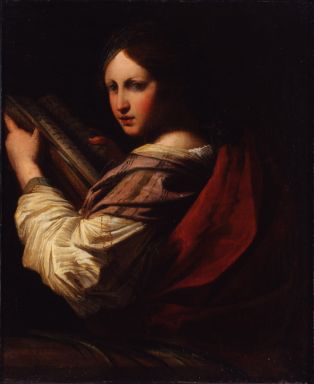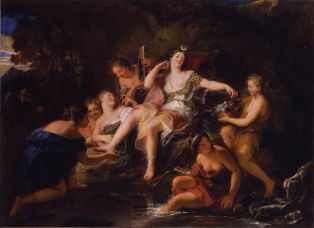- Découvrez les collections
- Notice d'oeuvre



Malines, vers 1500 ; Malines, 1589
H. 91 cm ; l. 66 cm (sans cadre) ; H. 102 cm ; l. 83 cm (avec cadre)
M0536_L.I.63
La scène évoque la discussion entre Suzanne et les deux vieillards cherchant à l’effrayer pour qu’elle cède à leurs avances. Sellaer peint dans un style italianisant dont l’origine est vraisemblablement son voyage en Italie. Ses œuvres rappellent le courant maniériste, auquel il emprunte la finesse du dessin, les couleurs franches et la souplesse du mouvement. À partir de l'unique tableau signé et daté par l’artiste ("Laissez venir à moi les petits enfants", 1538), il est possible de situer une vingtaine de compositions, dont celle d’Épinal.
L’épisode biblique de Suzanne et les vieillards concerne la fidélité au sein du couple, puisque les deux barbons lubriques veulent attenter à la fidélité de Suzanne envers son mari, avant de l’accuser publiquement d’adultère. Cette accusation est très grave : la femme convaincue d’adultère mérite la mort dans la loi juive, ce à quoi échappe la chaste Suzanne grâce à l’intervention du jeune Daniel. Dans cette figure d’épouse chaste bafouée, les exégètes, c’est-à-dire les commentateurs des textes bibliques, ont vu un symbole de l’Église, épouse du Christ, calomniée par les Juifs et les païens.
The Biblical episode of Susanna and the elders concerns the faithfulness between a couple, because the two lustful old men want to make Susanna unfaithful to her husband and then publicly accuse her of adultery. This is a very serious accusation: a woman convicted of adultery deserved to be killed according to Jewish law, a penalty which the chaste Susanna escaped thanks to the intervention of the young Daniel. This figure of a scorned chaste life has been interpreted by exegetes, or commentators on Biblical texts, as a symbol of the Church, the wife of Christ, slandered by Jews and pagans.
The Biblical episode of Susanna and the elders concerns the faithfulness between a couple, because the two lustful old men want to make Susanna unfaithful to her husband and then publicly accuse her of adultery. This is a very serious accusation: a woman convicted of adultery deserved to be killed according to Jewish law, a penalty which the chaste Susanna escaped thanks to the intervention of the young Daniel. This figure of a scorned chaste life has been interpreted by exegetes, or commentators on Biblical texts, as a symbol of the Church, the wife of Christ, slandered by Jews and pagans.




 Copyright© WebMuseo 2017 - 2024
Copyright© WebMuseo 2017 - 2024